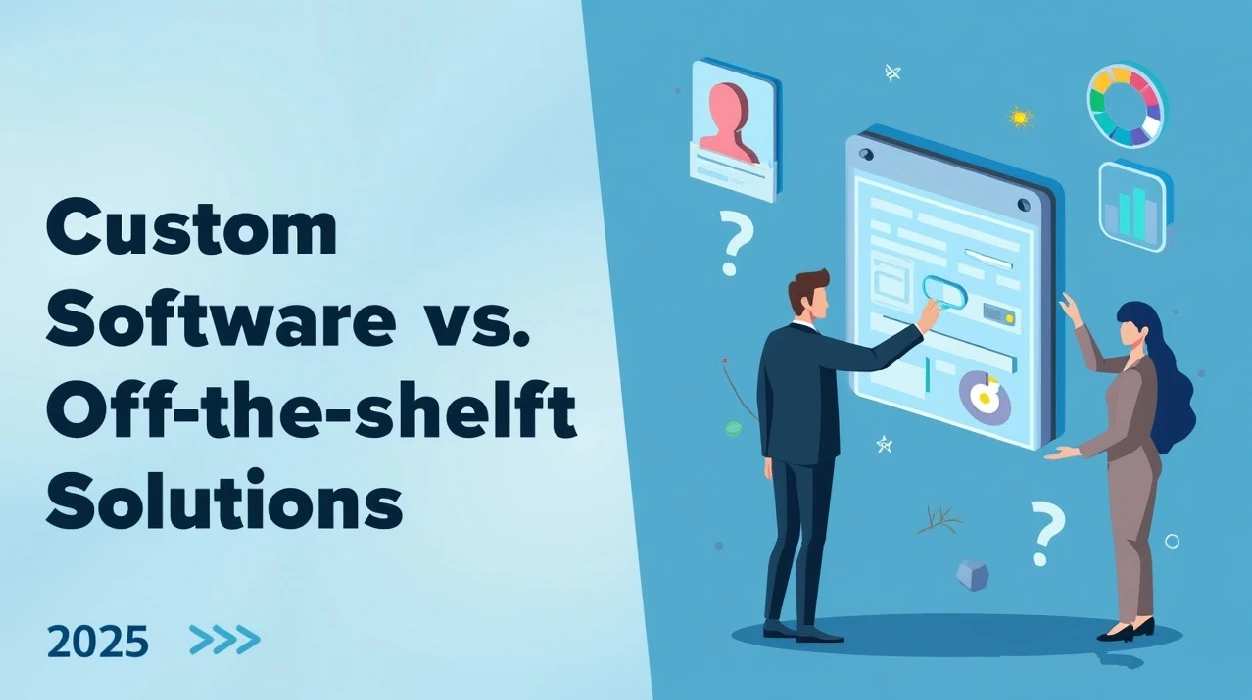What Is Custom Software?
Custom software is tailor-made to meet the unique requirements of your business. Instead of adapting your processes to fit the software, custom solutions are designed specifically around your workflow, challenges, and goals.
Advantages of Custom Software
-
Highly Tailored:
Built from scratch to align perfectly with your business needs.
-
Scalability:
Can grow and evolve as your business expands or new requirements emerge.
-
Competitive Edge:
Offers unique features and capabilities that aren’t available to competitors using off-the-shelf solutions
-
Integration-Friendly:
Seamlessly integrates with your existing tools and systems.
What Are Off-the-Shelf Solutions?
Off-the-shelf software is a pre-packaged product available to a wide audience. These are often standardized solutions that businesses purchase and implement as-is, with limited customization options.
Advantages of Off-the-Shelf Software
-
Lower Initial Cost:
Typically less expensive upfront than custom development.
-
Quick Implementation:
Ready to use out of the box, reducing time to launch.
-
Proven Reliability:
Often used by many businesses, meaning common bugs and issues have already been identified and addressed.
-
Support and Updates:
Ongoing updates and customer support from the vendor ensure you have the latest features.
Key Differences Between Custom and Off-the-Shelf Solutions.
| Feature | Custom Software | Off-the-Shelf Software |
|---|---|---|
| Cost | Higher upfront cost, long-term savings | Lower upfront cost, potential long-term limitations |
| Flexibility | Fully flexible, tailored to needs | Limited customization options |
| Time to Implement | Longer development timeline | Immediate availability |
| Scalability | Scales as your business grows | May not handle large-scale operations |
| Ownership | Full ownership of the code and data | Vendor owns the software, limited control |
| Support | Custom support often provided by developers | Standard vendor support available |
When to Choose Custom Software
Custom software is best when:
-
Your business processes are unique or complex.
-
You need specific features not available in standard solutions.
-
You’re planning for long-term growth and scalability.
-
Data security and privacy are critical, and you need full control over your software.
When to Choose Off-the-Shelf Software
Off-the-shelf software works well when:
-
Your requirements are common and don't require extensive customization.
-
You need a solution immediately and can't wait for custom development.
-
Budget constraints make a lower initial investment more appealing.
-
You want the peace of mind that comes with a proven, widely used product.
Conclusion
The choice between custom and off-the-shelf software comes down to your business’s unique needs, long-term goals, and available resources. For companies that value full customization, scalability, and a competitive edge, custom software is the clear winner. For those who prioritize quick setup, cost-efficiency, and proven reliability, off-the-shelf solutions are often the better option.


